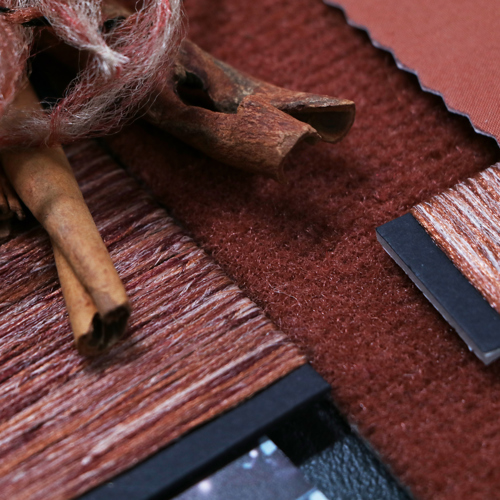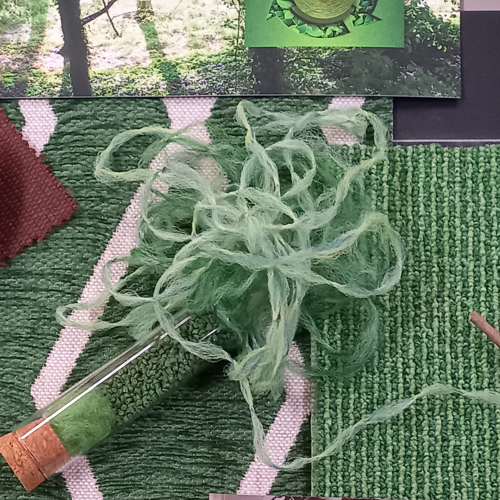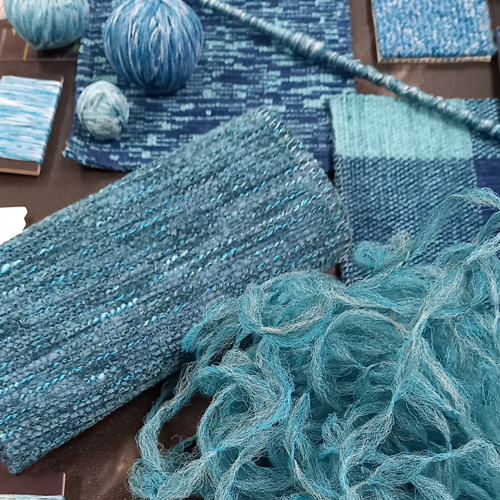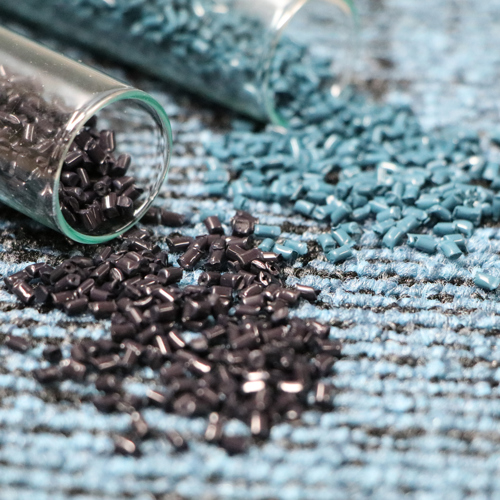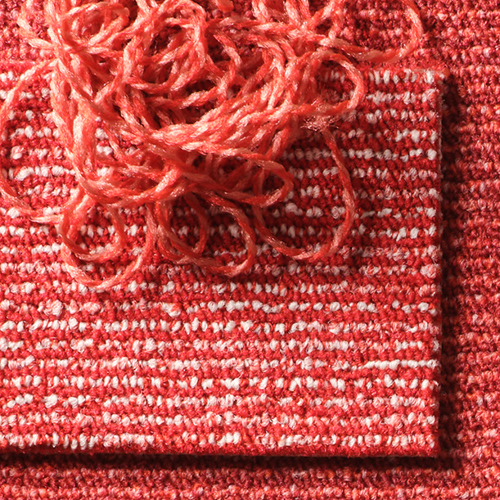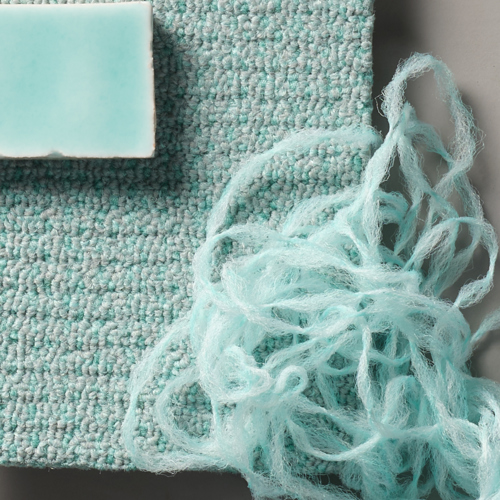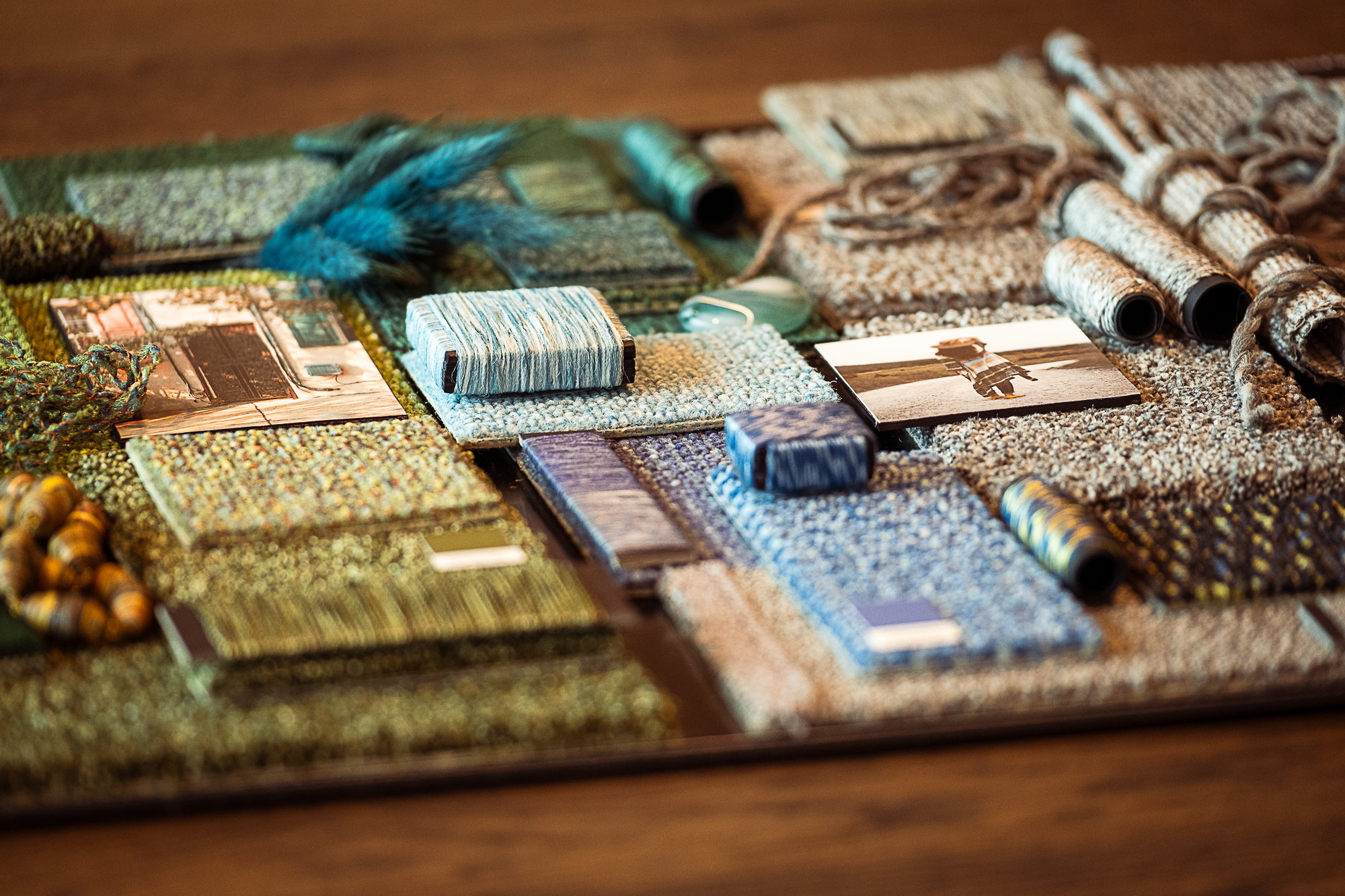How sustainable are your carpet colors?

Color is what most distinguishes your interior.
It’s an important part of your style, your authenticity and even your wellbeing. But how are colored carpets made exactly? And is there a sustainable way to do this?
For the sake of simplicity, there are basically two ways to make colorful carpets:
- Piece-dyed color process: Raw, white carpet yarns are dyed after they have been woven or knitted into a final carpet product. In piece dyeing, the dye is applied to the surface of the fabric and penetrates the yarns to varying degrees, depending on the type of fabric and dye used.
- Solution-dyed color process: Color pigments are added to the polymer solution before it is extruded into yarns. This way, the color becomes ingrained into the yarn itself.
Smart marketers have compared both technologies with a carrot and a radish.[1] When you cut open a radish, the purple-reddish color is only skin deep, while the inside of the radish is bright white. This is piece-dyed carpet. Inside a carrot though, the orange color goes all the way through it. This is solution-dyed carpet.
Solution-dyed nylon was invented in the 1950s. The process was developed as a way to enhance the colorfastness and durability of nylon yarns. By adding the color pigments to the polymer solution before extrusion, the resulting yarns had the color embedded throughout their structure. This innovation made the color more resistant to fading, even with prolonged exposure to sunlight and washing. Solution-dyed products allow for vibrant colors and more color contrast, especially in solid color designs.
Since its invention, solution-dyed nylon has become widely used in various industries, including residential and commercial flooring, and automotive carpets.
Piece-dyed vs. solution-dyed: which one is more sustainable?
Of the two technologies, solution-dyed nylon is generally considered to be more sustainable. There are several reasons for this.
1. Less water
Piece dyeing is a resource-intensive method and needs large amounts of water. After dyeing, the fabric goes through a rinsing process to remove excess dye. It is then washed and treated with finishing agents to enhance properties like softness, wrinkle resistance, or water repellency. Solution-dyeing on the other hand, reduces water consumption significantly and there is no need for the use of extra dyeing chemicals.
2. Reduced carbon footprint
The solution dyeing process needs less energy compared to traditional (piece-)dyeing methods, since it skips the energy-intensive steps of dye application, rinsing, and drying. This helps to reduce the carbon footprint of the manufacturing process and of the carpet end product.
3. Longer lifetime
Carpets that have been solution-dyed are more durable and colorfast, which reduces the need for replacement significantly. Solution-dyed nylon yarns are highly resistant to fading, even when exposed to sunlight for long duration. They can handle high traffic, frequent spilling, and in contrast to piece-dyed carpets, solution-dyed carpets can be cleaned frequently without losing their color. To preserve their colors, piece-dyed carpets are typically treated with an extra protection layer. Solution-dyed carpets don’t need this.
4. Recyclable
Solution-dyed nylon yarns can be recycled almost infinitely and can be used for the production of new yarns.
Unlimited colors without the environmental impact
With solution-dyed nylon carpets, it is possible to choose from an unlimited color palette, without having a harmful impact on the environment or the climate. Initiatives like B.I.G. Yarns’ Catch the Color even enable designers to select their own customized color designs and combinations with solution-dyed nylon.
Sustainable SDN yarns with low CO2 impact are the ideal components for contract carpets to relate color to durability and enable full creative freedom.
Your colors can make an impact on your customers, but that doesn’t mean they have to impact the environment.
[1] https://www.carpetguys.com/blog/carrots-radishes-and-carpet
